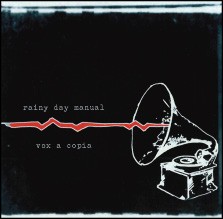The polls say now, as they said three months ago, as the
conventional wisdom said six months, a year, two years ago, that A C
Wharton, the well-liked Shelby County mayor, is a cinch to be the
next elected mayor of Memphis.
With the special mayoral election just two weeks away, and with
Wharton holding on to what the recent Mason-Dixon poll evaluated as a
30-point lead, it would seem that the closest of his competitors
— former Councilwoman Carol Chumney, Mayor Pro Tem
Myron Lowery, and veteran lawyer Charles Carpenter
— are no more than a distant second tier.
And yet, some slippage, while not inevitable, is more than possible,
especially if Wharton’s rivals begin to land some of the punches
they’re throwing at a front-runner who occasionally slaps out a telling
jab of his own but, for the most part, is playing rope-a-dope, skipping
as many public forums as he attends.
Another major forum, organized by the Cordova Leadership Council,
was scheduled for this week, and, at press time, Wharton seemed likely
to be a no-show. Next Tuesday’s Rotary Club debate luncheon at Rhodes
College may be the last good opportunity for the public to size up the
major candidates — at least until an election-eve television
debate on WREG, News Channel 3.
The station’s first televised showdown between Wharton and his three
closest rivals took place last Saturday night, and expectations were
high for a viewing audience comparable to that which registered good
ratings for the inaugural TV debate of the season, held in August on
WMC-TV, Action News 5.
For much of the way in the Channel 3 debate, it was a legitimate
question as to which participant was most prosecutorial:
Was it WREG anchor Richard Ransom, who consistently (if
gracefully) hounded the four candidates for their lack of candor,
charging them with making “political” answers? Or Charles Carpenter,
who pressed a relentless attack against front-runner Wharton? Or
Lowery, who sternly marshaled evidence against both Carpenter and
Wharton, interrupting their replies to one inquisition before whipping
immediately to the next?
Even A C himself got cranky and ad hominem once or twice.
The big surprise was the subdued final posture of Chumney, the
former damn-the-torpedoes councilwoman who had arguably got the
mischief started by asserting that Wharton wanted to pile on new layers
of bureaucracy and reactivating an old accusation that the county mayor
had committed some hanky-panky in getting his car registered.
Declining, unlike the others, to take advantage of the opportunity,
in the two-hour debate’s last half hour, to address direct questions to
whomever she might choose for up to four minutes, Chumney explained
that as mayor she might in the future have to “work with” one of her
three opponents. So why would she want to rile things up now?
Wharton struck some as overcautious, even a bit of a waffler, having
made a somewhat generalized case for the success of his seven years as
county mayor (though his claim to moving ahead on a Shelby Farms plan
was acknowledged by critic Chumney) and, in his finest moment —
one that earned him “courage” points from opponent Lowery —
acknowledging that he was “dead wrong” in having allowed radio
talk-show host Thaddeus Matthews to use the “N”-word in his
presence.
The candidates all hoisted their campaign personas in their opening
remarks: Self-described man-of-action Lowery depicted himself through
the slogan “If it is to be, it’s up to me.” Carpenter, insisting he was
“not a politician” (shades of his longtime mentor Willie
Herenton), promised to substitute a “business culture” for a
“political culture.” Chumney assumed the role of civic crusader, vowing
to “fight for you” (a note that many, even some longtime supporters,
consider more appropriate to a legislator — Chumney served both
in the legislature and on the council — than an executive).
For obvious reasons, clear front-runner Wharton bore the brunt of
most of the direct attacks. Sometimes things got ultra-personal.
Carpenter was particularly slashing, at one point demanding to know how
it was that the county mayor could utilize as campaign aides Bobby
Lanier, Susan Adler Thorp, and Tom Jones, three
longtime Wharton associates who, Carpenter insisted, had run afoul of
ethical or legal guidelines. And both Carpenter and Wharton would be
taxed by Lowery for using former Herenton intimate Reginald
French in their campaigns.
Lowery also got Carpenter to own up to having earned some $5 million
in work for the city over the 17 years of his mentor Herenton’s
mayoralty.
Indeed, in the judgment of several observers (including this one),
the acting mayor probably rose and shone more consistently than the
others, though his final statement (which was also the final statement
of the night) was a somewhat risky defense of his “Hello, Dalai”
fist-bump moment, which Lowery seemed to be trying to escalate into a
transcending piece of good public relations for the city.
Understandably, such other hopefuls as Jerry Lawler, Wanda
Halbert, and Kennth Whalum Jr. were vexed at being left out
of the latest TV debate, though all but Halbert were scheduled for this
week’s Cordova forum, as was former Shelby County commissioner (and
perennial mayoral candidate) John Willingham.
• Much of Wharton’s recent strategy has consisted of
advertising the significant number of other public officials who have
endorsed him — including assorted City Council members, county
commissioners, and others. At one endorsement ceremony last week,
featuring Sheriff Mark Luttrell, the county mayor unbent from
his above-the-battle posture long enough to fire back at opponent
Chumney’s claim that he was running for one job before completing his
commitment to another.
“That’s exactly what she did,” Wharton said. “She was running for
mayor [in 2007] before she’d finished her commitment to the City
Council.”
Chumney’s response: “The City Council is not a full-time job, as is
the job for county mayor, and if elected city mayor in 2007, I would
not have been sworn in until my council term expired.”
• Adrienne Pakis-Gillon, the Democratic challenger to
Brian Kelsey, the heavily favored Republican in the special
election race to succeed the resigned Paul Stanley in state
Senate District 31, knows the odds against her. But she thinks she can
gain traction by a three-pronged strategy of talking up Democratic
issues like jobs and health care, appealing to wavering Republicans,
and pointing up Kelsey’s personal eccentricities.
On the latter score, she notes a penchant for public stunts by the
former state representative, who resigned his District 83 state House
seat last week to facilitate an early special election to replace him,
should he win the state Senate seat, as expected.
One action Pakis-Gillon cited was Kelsey’s waving an envelope
stuffed with bacon during a House floor debate last year.
“We don’t need to be the comedy routine on late-night television,”
she told a meet-and-greet group in the Gray’s Creek area of east Shelby
County last Thursday night.
The meet-and-greet affair boasted the attendance of Luttrell, a
longtime friend of the candidate. And several other attendees, like
Luttrell, were Republicans. A number of these suburban residents
professed concern over the guns-in-parks bill passed in the last
session with the support of Kelsey and other GOP legislators.
“The Republican Party used to be known as the conservative party, as
the party of common sense. They’ve left us. Will you become the senator
of common sense?” asked one man, who identified himself as a
dyed-in-the-wool Republican.
And when Pakis-Gillon answered by expressing at length her own
opposition to the gun bills passed in the last session, condemning the
National Rifle Association for what she said were its arm-twistings and
infusions of money, the man said, “Well, you’ve got one Republican
vote!”
Another GOP attendee, who had been active in the campaigns of
Republican state Senate majority leader Mark Norris, said, “For
us to be comfortable, we need to have somebody in Nashville to deal
with those issues we haven’t even thought about yet. Someone with
maturity. I’m not impressed with the Republican candidate.”
These may be atypical voices, or they may signal a possible trend.
The well-financed Kelsey remains an odds-on favorite, but Pakis-Gillon
demonstrated at the Gray’s Creek meet-and-greet that she already had a
modicum of Republican support herself and would be probing for more
crossovers.
 Photo: John Betancourt
Photo: John Betancourt 


